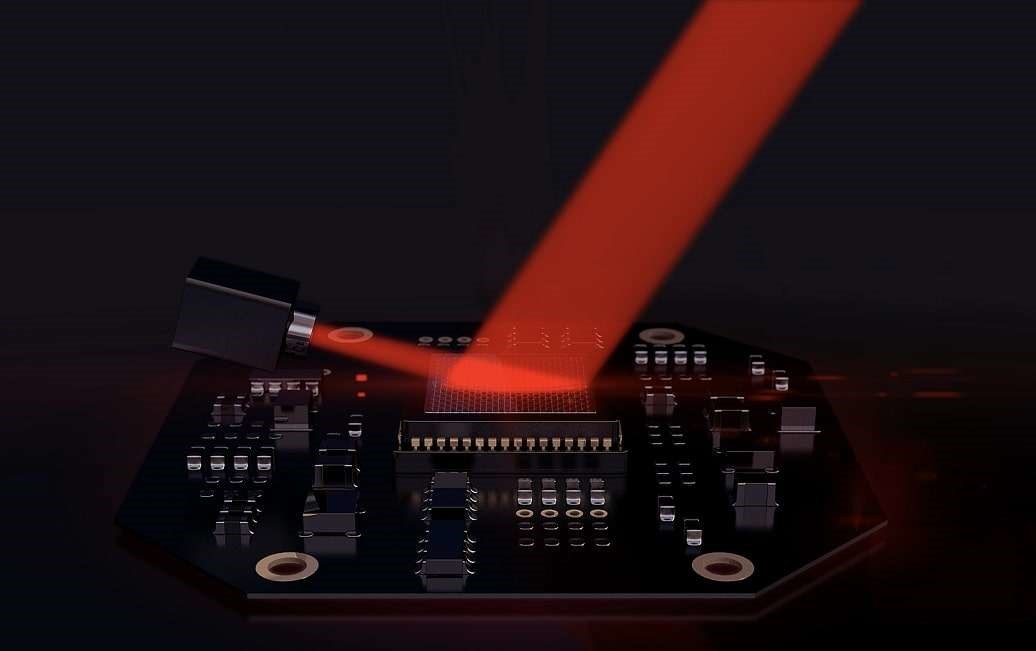By Junko Yoshida, global co-editor-in-chief, EE Times
Lumotive, a Seattle-based, venture-backed startup, unveiled this week a LiDAR technology based on metamaterials, a relatively new and exotic technological approach that few, if any, of its competitors have adopted.
Among the many sensors destined to go inside advanced driver-assistance systems (ADAS) and autonomous vehicles (AVs), LiDARs continue to be a hotbed of new technology. The flipside of this vibrant activity, however, is the hard reality that the LiDAR market remains embryonic and its technologies fragmented. With more than $800 million pouring into LiDAR tech startups over the last few years, Alexis Debray, technology and market analyst at Yole Développement (Lyon, France), estimated, “There are 60 to 70 LiDAR companies that have popped up worldwide.”
Lumotive is jumping into this crowded field with the expectation that by using metamaterials, it can surpass its more established rivals. Lumotive has its own version of the technology, which it describes as liquid crystal metasurfaces (LCM).
In an interview with EE Times, Lumotive co-founder and CEO Bill Colleran called metamaterials a “pivotal technology” that opened the door for Lumotive to develop a LiDAR that can steer beams with no moving parts. Based on the light-bending properties of metamaterials, LCM can steer light without relying on the mechanical spinners in conventional LiDARs, including those used by Waymo.
Lumotive’s LCM can steer light without relying on mechanical spinners found in conventional LiDARs.
Of course, Lumotive isn’t the first to highlight a LiDAR that doesn’t rely on mechanical scanning. A host of rivals utilizing MEMS mirrors or optical phased arrays has already claimed that their LiDARs use fewer components or “no mechanical parts.”
Colleran, however, stressed, “Ours are different,” because its LCM semiconductor chips come with a larger optical aperture (25 × 25 mm). This allows a LiDAR with a much longer range. Combining a 120° field of view with fast random-access beam steering will enable Lumotive’s system to offer high performance, the startup promised.

The image shows a laser shining onto Lumotive’s LCM chip. By programming electrical signals onto the chip, the reflected light is directed into any direction over a 120° field of view. (Image: Lumotive)
Yole analyst Debray, who was briefed by Lumotive, called the technology “original” and “interesting.” However, because there is no system prototype yet available, he described the product as “still preliminary and in early stage.”
Asked about a launch schedule, the Lumotive CEO told us that samples will be available in the third quarter this year. Will it be automotive-grade−qualified? Colleran said that is more than two years away. However, he appears cool with the late schedule because there are opportunities for his company’s LiDARs beyond automotive — including industrial, robotics, and drones. Lumotive also expects its LiDARs to be used as after-market options (which are not required to be automotive-qualified). Lumotive appears to be playing a long game, expecting to intersect with a volume automotive market at a lower cost, which Colleran sees as still several years off.
In Debray’s view, the LiDAR market — in which investment activities have overheated — will evolve in “phases.” The first wave is already happening in a market crowded with traditional mechanical LiDARs. Debray sees the second wave starting this year, with LiDARs based on MEMS. These will be smaller and cheaper than previous-generation LiDARs. Optical phase-array LiDARs, flash LiDARs, and something entirely different like Lumotive’s LCM-based LiDARs will be the third wave, he predicted.
Metamaterials
The story of Lumotive can’t be told without referring to metamaterials.
Metamaterials are defined as “artificially structured materials.” The advantage of metamaterials is the opportunity to exert unprecedented control over their properties or a related device. A metamaterial is not a specific thing but, rather, “a design approach” that can unleash new ways to control the flow of light and other wave excitations.
A good example of the commercial use of metamaterials is Kymeta’s flat-panel antenna technology, explained David Smith, professor of physics at Duke University and a pioneer in metamaterials research. Kymeta has commercialized a new metamaterials-based satellite antenna.
Kymeta leverages the “particular architecture” of metamaterials, he noted. Its antenna can move electronically without phase shifters, related amplifiers, and other components at each point of its surface. Too many phase shifters and amplifiers “would cost money, burn power, and require cooling devices,” said Smith.
By applying metamaterials design principles, Kymeta was able to dramatically increase the density of antenna elements in its flat-panel antenna, compared to a phased array. Phase and amplitude can be controlled simply by activating or deactivating antenna elements.
The metamaterial architecture applied to Kymeta’s antenna has been adapted to Lumotive’s LiDAR. The difference is that while metasurface concepts have been applied to microwave frequencies in the past, this is the first use of dynamic metamaterials developed for optics, Smith explained.
Click here to read the complete story, originally published on EE Times.
Advertisement
Learn more about Electronic Products Magazine





